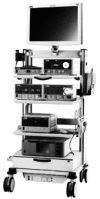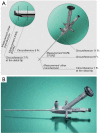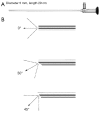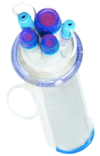Instrumentation for minimally invasive surgery in pediatric urology
- PMID: 27867840
- PMCID: PMC5107385
- DOI: 10.21037/tp.2016.10.07
Instrumentation for minimally invasive surgery in pediatric urology
Abstract
The success of modern surgery is dependent on the availability of good equipment and instruments. This dependence increases along with the degree of sophistication of the surgery performed. Paediatric minimally invasive and endoscopic surgery are sophisticated techniques where imaging is obtained through a video-circuit. Endoscopic surgery has opened the field of virtual reality in surgery, and in minimally invasive surgery the actual operation is done through a limited number of small holes. Robot-assisted urologic surgery is an emerging and safe technology for many urologic paediatric operations, although further documentation, including long-term functional outcome, is deemed necessary before definite conclusions can be drawn regarding the superiority or not of robotic assistance compared to conventional laparoscopic approaches.
Keywords: Paediatric minimally invasive surgery; endourology; laparoscopy; robotics; urology.
Conflict of interest statement
The authors have no conflicts of interest to declare.
Figures






















































References
-
- Godbole P,Koyle MA, Wilcox DT. editors. Pediatric Endourology Techniques. London: Springer-Verlag London, 2014.
-
- Smith AD, Badlani G, Bagley D, et al. editors. Smith's Textbook of Endourology. PMPH-USA, 2007.
-
- Instrument set for laparoscopic and endourologic pediatric surgery-Karl Storz Endoskope Catalogue-Endoscopes, Instruments, accessories, Units and Imaging Systems. Available online: http://www.karlstorz.com/bt/en/online-catalog.htm
Publication types
LinkOut - more resources
Full Text Sources
Other Literature Sources
